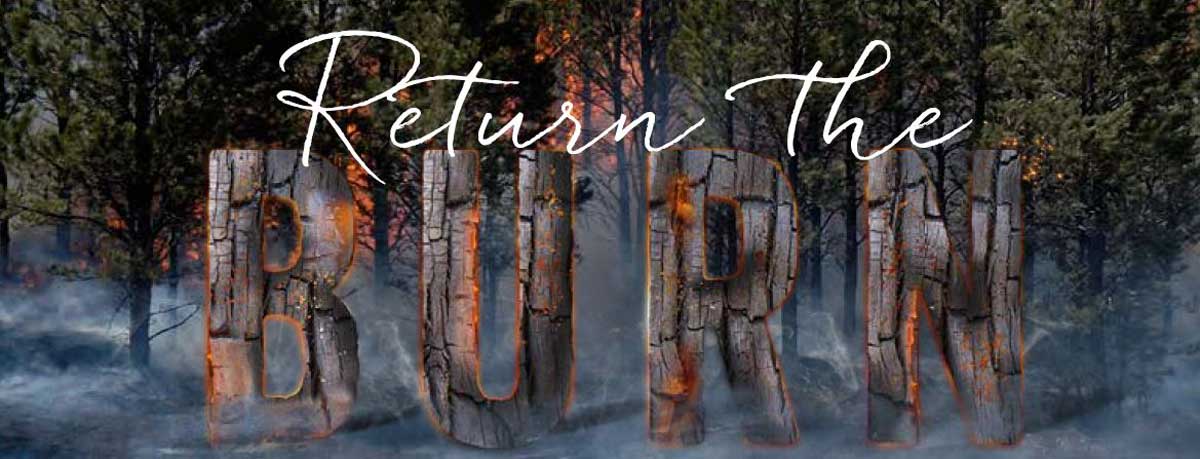Fire, in some dosage or another, is not only natural, but an essential component of almost every North American landscape, from the plains of Oklahoma to the West’s vast elk country. Historically, nearly all of it saw flames regularly—from southwestern ponderosa pine forests that burned every five to 20 years to northern mountains blanketed with lodgepole that torched dramatically once a century.
Fire acts to refresh the system—returning nutrients to the soil, stimulating plant growth, and restoring forest health and resiliency. Prescribed burns (aka controlled burns) seek to replicate the work wildfires have traditionally brought forth, but in a measured and calculated fashion. Ignited by highly trained fire managers under specific conditions, they’re a way to reap fire’s natural benefits while eliminating much of the uncertainty, risk and cost.
The biggest challenge with prescribed fire is the public’s perception of it.“ see smoke, and they go to lighting up the phones, calling the fire department and everything. Fire is a natural part of the ecosystem. It is necessary. And done correctly, it is a good thing.”Prescribed burns are typically orchestrated like a military operation, highly regimented with every detail scrutinized. From finding funding to limiting smoke dispersal, they must meet strict legal, environmental and safety standards.
Managers write detailed burn plans for each proposed fire to identify management objectives and the conditions under which it can be ignited to accomplish those goals while maintaining safety. It can take years of preparation to work through the planning processes, including NEPA analysis plans, landscape level habitat planning, and other necessary steps.
Managers must wait for the conditions to be perfect—temperature, humidity, and wind speed and direction, to name a few—to control fire intensity and to limit smoke effects on human health.
Regulations mean that the burn window is short—a few days for a fire that’s been in the planning process for years. When the opportunity presents itself, managers must be ready.
Prescribed fires must also meet strict safety requirements to limit the potential of a fire going rouge. There’s always an established fire line—a fuel break—and Lever says crews usually try to choose already defensible areas, like roads. There’s also a strict hierarchy, with each firefighter at the scene responsible for different tasks—safety, making sure the fire doesn’t burn where it isn’t supposed to, ignition and an overall fire boss.
Because of the limited burn window and the nature of fire, occasionally a hunter might find their favorite patch of woods scorched come fall. That’s when it’s good to take just a slightly longer view, says RMEF Chief Conservation Officer Blake Henning.
“Putting prescribed fire on the land benefits elk hunters in the long run by creating healthier habitat and animals,” he says. “You’ll have better deer and elk. Maybe not that year—but the second year, and the third year and the fourth. You’ve got to have a little tolerance, given all of those limitations of putting fire on the ground.”
At the Pushmataha WMA, closed-canopy control plots, which are neither thinned nor burned, produce about 200 pounds of forage per acre. But treated savannah areas—thinned and then burned on two-year intervals—produce 4,000 pounds per acre.
Breeding bird surveys have also shown upticks in both the number and diversity of birds in the area, from bobwhite quail to Bachman’s sparrows.
What happens without burns?Without flames, forest health nosedives. As flammable fuels build up, so does the likelihood for a catastrophic wildfire. In many circumstances, a lack of fire can create vast landscapes of homogenous forest—trees of the same species and age—which can leave forests vulnerable to largescale insect and disease outbreaks, like pine beetle infestations in lodgepole pine forests across the West.
Prescribed fire, on the other hand, provides an incredible nutrient flush. It safely reduces hazardous fuel build-ups while helping to control pests, diseases and invasive species. And it greatly improves habitat for everything from butterflies to bulls. From the elk hunter’s perspective, fires help to jumpstart grasses, forbs and browse, improving forage—and the health of the herd in the process. This article was adapted from the March/April Bugle Magazine
